#John LeConte
Text
The evangelicals in 19th Century Williamsburg and Greenpoint. A Journey Retro
The evangelicals in 19th Century Williamsburg and Greenpoint. A Journey Retro
Williamsburgh, 1834. Illustration from Eugene L. Armbruster’s Photographs & Scrapbooks. Source: Brooklyn Historical Society.
The faith-flavored identity of New York City was decided on the frontiers of social controversy in religious places like the evangelical Protestant churches of Williamsburg and Greenpoint.
Early settlers in the area held private Sunday services in their homes or took a…

View On WordPress
#Brooklyn Abolitionists#Bushwick Dutch Reformed Church#Eighteenth Street Methodist Church#Eugene L Armbruster#First Baptist Church of Williamsburg#Greenpoint#Henry Reed Stiles#Jacob Riis#John LeConte#Joseph LeConte#Lenape Indians#Lydia Cox#North Third Street Mission#Panic of 1837#Phoebe Palmer#Samuel Cornish#Samuel Eli Cornish#Seventh Day Adventists#St John&039;s Methodist Episcopal Church#Sylvester Tuttle#Tony Carnes#William Hodges#Williamsburg#Williamsburg Bethel Independent Church#Williamsburg Bible Society#Williamsburg Methodist Episcopal Church#Williamsburg Temperance Society
0 notes
Text
sorrisi e risate (62)
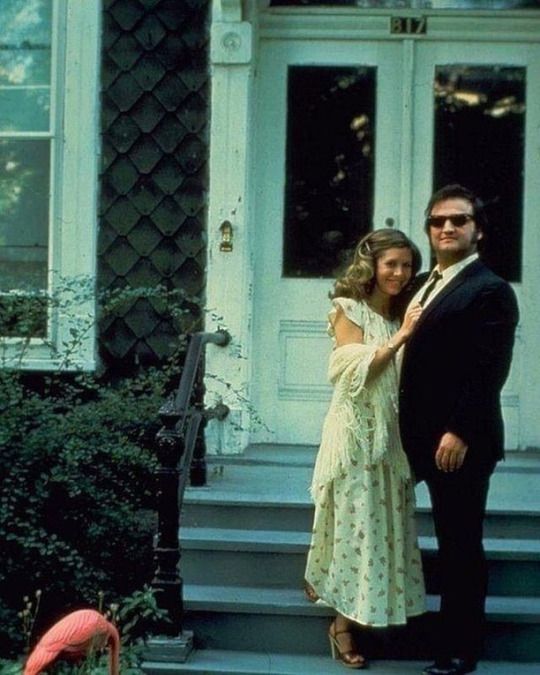
[*] Carrie Fisher e John Belushi sul set di 'The Blues Brothers' (1980)
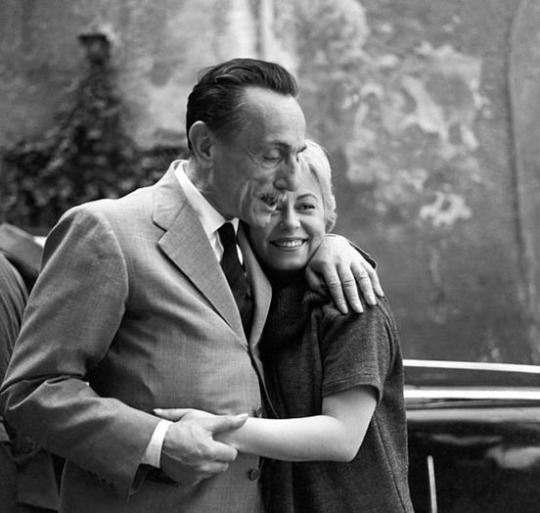
[*] Edoardo De Filippo e Giulietta Masina sul set di 'Fortunella' (1958)
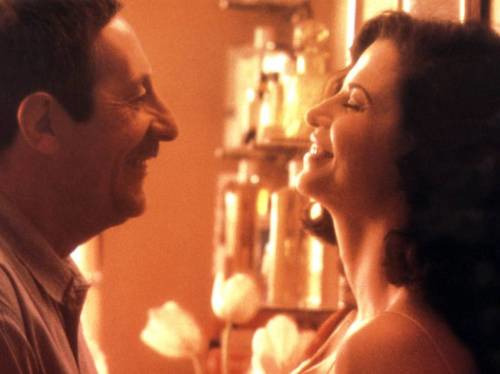
[*] Patrice Leconte e Anna Galiena nel film "Le mari de la coiffeuse"
(1990)

[*]

[*]
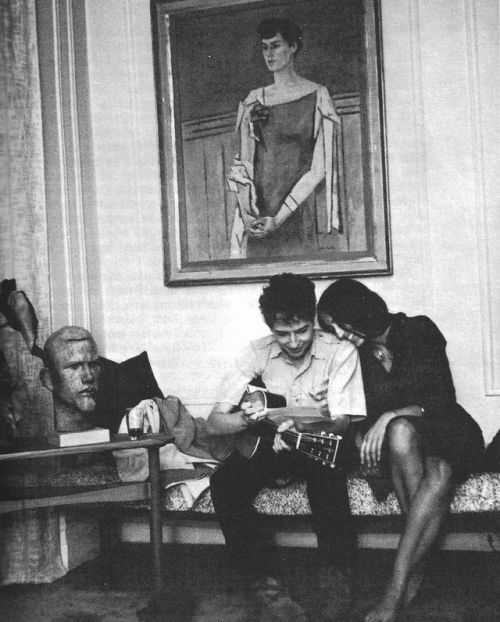
[*] Bob Dylan e Joan Baez (1963)

[*]
https://www.tumblr.com/funes-the-notorious/
https://www.facebook.com/CineSet
https://the-french-disconnection.tumblr.com/
https://stim7.tumblr.com/
http://love-lessourires.tumblr.com/
https://baywts3.tumblr.com/
https://opuseinszwei.tumblr.com/
12 notes
·
View notes
Text
never asked me once about the wrong i did: chapter 2
tw: depictions of child ab*se, general Catholic suffering
Llewelyn gets his girl in trouble two years later, and poor Mama damn near dies of shame. She finds out when the girl’s daddy comes to the door hootin’ and hollerin’, demanding that Llewelyn make her honest.
They had all just gotten home from supper at Granmere’s, bellies full of etouffee, and were stripping out of their church clothes when all the hullabaloo began. Granmere had been real quiet that night, not even making her usual concerned comments about Merriell. She just sat in her rocking chair and rubbed her cross while they peeled crawfish, only stopping to touch that old thing to her forehead before going back to rocking. Mama always said she did that when she was praying real hard about something, something only she and God knew about. Sometimes Merriell feels like Granmere isn’t human like the rest of them, she’s something else from the other side, old as time itself, sent by God to see into his soul and spy on all his thoughts. Maybe that’s why she doesn’t love him as much as the other grandchildren; that him killing Vernon was just the precipice of the sins he’s committed, all of which can be laid out before her with just one glance. He still steals candy, still waits for Mr. Leconte to come home each night with bated breath, skips school now. At least he’s stopped chasing the poor cat, but Merriell isn’t sure that will save him from damnation.
None of them felt bold enough to open the bedroom door even a crack once they hear all the yelling, but curiosity has Merriell flat on his belly to peek under it, able to just make out Mama’s stockinged feet and an unfamiliar pair of shoes across the house. Daddy had run back to the docks quick after supper, leaving Mama alone to deal with this angry stranger. His brothers take turns pressing their ear to the door above him, quieter than they’d ever been as they try to piece together what the fuss is about. Llewelyn just paces the floor of their shared bedroom, biting at his nails.
“Oh, Llew, you one dead man,” Willard whispers when it’s his turn to listen, “Ain’t you know how to pull out?”
“Shut up,” Llewelyn says, still chomping away at his nails. Merriell’s never seen him look so scared, and it’s a fear he feels seeping into his own bloodstream. This is the worst thing any of them have ever done, far worse than stealing candy. He sees Mama’s feet begin walking towards the door, and scrambles back with a quick warning before there’s a sharp rap.
“Llewelyn,” Mama sounds as mad as a wet cat, “get out here, boy.”
Even though it’s Sunday, and Daddy doesn’t drink today, Merriell watches him beat Llewelyn harder than he’s ever seen when he gets home. Mama, who usually stays out of Daddy’s hair when he’s wailing on them so she doesn’t get hit herself, has to eventually throw her frying pan into the mix. She wacks Daddy hard on the back until he gets off Llewelyn, leaving him a blubbering blood-soaked mess on the kitchen floor. Despite how damn mean Llewelyn can be, Merriell has to stop himself from running over and trying to help his big brother. He stays at his spot huddled in the corner of the kitchen, unblinking eyes counting the spots of blood on the ground, easier to focus on the myriad of specks on the tile than his brothers shaking and sobbing body.
“You think that poor girl’s gon’ marry him with no damn teeth, John?”
Daddy relents, storming out of the house mumbling something about needing a drink, and slams the door behind him. At Mama’s command, Willard and Francis carry Llewelyn back to Granmere’s to get fixed up. She’s a traiteur, as good as any doctor they can find in these parts. She had been there at each of their births, helping Mama through the labors when Daddy was nowhere to be found. She had even been the one to dig the hole for Vernon, chanting in Creole and praying for his soul the whole time.
Merriell helps Mama clean the floor, pretending he can’t hear her cry as they scrub away all the blood. She doesn’t cry much, life and Daddy having made her hard. It breaks his heart to hear her but there’s nothing he can do, nothing any of them can do, to stop Daddy from being such a mean son of a bitch. Sometimes Merriell wishes him dead, and adds that to the list of evil thoughts Granmere and God can hear him think. When Mama goes to empty out the bucket of water and soap, he finds one of Llewelyn’s teeth on the ground, knocked straight out of his mouth and under the kitchen table. Without thinking, he stuffs it into his pocket before Mama can see. Long after the blood has been cleaned up and Daddy has stumbled home, Merriell lays in the bed he shares with Arthur and looks at the tooth. It’s a small, yellow thing and the jagged edges poke at his finger tips like a knife. He doesn’t know why he kept it, but finds some small comfort in rubbing it between his fingers. His own teeth have started to fall out and be replaced, and he feels bad for Llewelyn who won’t grow this tooth back. He presses it to his forehead, closing his eyes and praying to God like Granmere might.
Dear God, please forgive Llewelyn for his sins. Please forgive Daddy. Please forgive me. Amen.
A week later, Merriell finds himself back in church on a quiet Tuesday. They had all risen early that morning, been allowed to skip school but made to scrub their faces and underarms while Mama pulls a comb through their messy curls. She dons her best dress, a light purple number with a hat to match and does her best to keep a smile on her face.
“What a lovely day the Lord gave us,” she kept saying, fanning herself with her hand as they walked to the rickety old church. Daddy and Llewelyn walked ahead of them, Daddy with his hand firm on his son’s shoulder, either out of comfort or to keep him from running. Merriell wonders what they’re talking about, realizing he knows little about the man he calls his father. He can count on one hand the amount of times he’s had a conversation with him, finding that hiding away was his safest option. Daddy didn’t do much else aside from work, drink, and beat them silly; never much time for talking between those events. Mama did all of the childrearing, firm but loving while she did her best to keep them alive and out of trouble. His brothers accuse him of being a mama’s boy but Merriell doesn’t mind. He holds her other hand tight and has to take big steps to keep up with her hurried stride.
“It’s hot, Mama,” Robert complains, kicking at a rock.
“Hush. People pray for days like today,” Mama reminds them. “And don’t kick no rocks, boy, you gon’ scuff those shoes.” They continue their walk towards Llewelyn’s fate in silence, the Louisiana sun beating down hard like the fists of God.
“Ain’t this a crock o’ shit,” Willard mutters under his breath next to him as the ceremony progresses, pulling at the collar of his shirt. It’s a sweltering day in August and Mama’s rule of keeping their church shirts tidy has disappeared in favor of marrying off her son as soon as possible.
Merriell feels hot and sweaty all over, the sparsely filled church somehow stuffier than outside, shirt clinging to his back as he leans forward against the pews. Mama is up front with Daddy and Granmere, far enough where she can’t scold him for not sitting proper.
Merriell watches his eldest brother’s solemn face, still peppered with yellowing bruises, as he stands with his betrothed at the altar. She ain’t ugly, and Merriell thinks real hard to try to find something he finds attractive about her. She’s Creole like them, which is a blessing since Daddy would have surely killed Llewelyn if he knocked up a white girl, and has curly brown hair hidden under her veil. Merriell can see the curve of her belly poking out from her white dress, and wrinkles his nose thinking about how that baby got in there. He’s not ignorant to how babies are made, seen their cat go after more females than he can count and heard Willard and Victor gloat about their escapades. He just doesn’t understand what the fuss is about. He’s still young, he tries to convince himself, more concerned with fishing and helping Mama than girls and what they’ve got going on under their skirts. When he’s older, he’ll want to touch a girl the way his brothers brag about. He knows it.
“They in love?” He finds himself asking.
“You gotta be a damn fool if you think they in love,” Willard snorts, shaking his head, “Llewelyn love that she ain’t never say no to him. Look at him now.”
Merriell wonders what it’s like to be in love. He doesn’t think Mama and Daddy are in love; how could Mama love him with all the bad he does? Auntie Maude and Uncle Ed, little Eugene’s mama and daddy, might be in love; they’re real sweet on each other and steal kisses in Granmere’s kitchen when they think no one is looking. Merriell then wonders what it would be like to get married, now knowing that being in love doesn’t have anything to do with it. What it would be like to be kneeling up at the altar, in front of Mama and Daddy and God, binding yourself to another until the day you die. But when he thinks about who he might marry, as hard as he tries, none of the girls in his class come to mind. All he can see is Mr. Leconte’s face, hand pushing red hair away from his brow with a quick wink. The thought makes something in Merriell’s belly twist tight, and he squeezes his eyes shut to will the image away. He tries to trick himself into thinking he wishes Mr. Leconte was his daddy, someone nice and loving who kissed him goodnight, and that’s why he waits for him each night. The idea of a goodnight kiss brings that twisting feeling back, and he pinches his arm through his sweat-soaked shirt. Punishment for his thoughts, in God’s house of all places. When he opens his eyes again, he looks up to the windows and counts the stained glass panes until thoughts of Mr. Leconte and the heaving feeling in his heart fade away, replaced by the ringing of church bells marking the beginning of his brother’s loveless marriage.
Thanks for reading! I’m thinking this story will probably end up being around 5 or 6 chapters, depending on some ideas I have. I’ve been wanting to dive into snafus psychology and why he is the way he is (war trauma aside) so this chapter is pretty headcanon indulgent heehee
#hbo war#hbo the pacific#the pacific#fanfic#the pacific fanfic#the pacific fanfiction#sledgefu#snafu shelton#merriell shelton#eugene sledge#next chapter will be a time jump of about ten years!#Maddie writes
10 notes
·
View notes
Note
Hey can you share what statement you're talking about? I've been feeling very annoyed by people's behavior re dwd so i love seeing cast and crew addressing stuff but I dont always know where to find it. Thanks in advance :)
Forty members of the Don't Worry Darling crew and production team are speaking out following accusations of on-set tension tied to the recently released film.
Vulture reported on Friday that film star Florence Pugh and director/star Olivia Wilde got into a "screaming match" on the Don't Worry Darling set, citing an unnamed insider who reportedly spent "significant time" behind the scenes of the film.
Claiming that a "blowout argument" took place between Wilde, 38, and Pugh, 26, in January 2021, the outlet reported that Pugh was allegedly upset with Wilde's "frequent, unexplained absences," stating that she and star Harry Styles, who are dating, "would just disappear."
Now, in an exclusive statement to PEOPLE, personnel who worked on Don't Worry Darling say that any rumors of onset tensions "are completely false."
"As a crew, we've avoided addressing the absurd gossip surrounding the movie we're so proud of, but feel the need to correct the anonymous 'sources' quoted in a recent article," the statement begins. "Any allegations about unprofessional behavior on the set of Don't Worry Darling are completely false."
Calling Wilde "an incredible leader and director who was present with and involved in every aspect of production," the behind-the-scenes workers said the star "ran this set with class and respect for everyone involved."
They also stated, "There was never a screaming match between our director and anyone, let alone a member of our cast," referencing Vulture's claims about an onset feud between Wilde and Pugh.
"We are happy to put our names on this, as real people who worked on the film, and who have witnessed and benefitted from the collaborative and safe space Olivia creates as a director and leader," the statement continued. "We're also thrilled that the movie is in theaters this weekend. We can't wait for you to see it on the big screen."
Miri Yoon, a producer for Don't Worry Darling, also told PEOPLE exclusively, "Rumors of screaming matches between our director and leading lady on set are completely unfounded. We truly hope you enjoy the movie."
[...]
See the full list of names of the 40 members of the Don't Worry Darling crew and production team below:
Chris Baugh, location manager
Josh Bramer, property master
Katie Byron, production designer
Matthew Libatique, director of photography
Steve Morrow, sound mixer
Arianne Phillips, costume designer
Alex G. Scott, executive producer
Katie Silberman, writer/producer
Heba Thorisdottir, makeup department head
Eliana Alcouloumre, production assistant
Mary Florence Brown, art director
Monica Chamberlain, assistant costume designer
Conrad Curtis, second second assistant director
Raphael Di Febo, assistant property master
Rachael Ferrara, set decorator
Jake Ferrero, lighting technician
Jeff Ferrero, gaffer
Zach Gulla, set dresser
Yani Gutierrez, production assistant
David Hecht, assistant property master
Becca Holstein, director's assistant
Nic Jones, programmer
Michael Kaleta, boom operator
Gerardo Lara, electrician
JB Leconte, rig programmer
Lexi Lee, set dresser
John Mang, dolly grip
Mark Mann, best boy
Gideon Markham, lighting console programmer
Alex Mazekian, graphic artist
Melissa McSorley, food stylist
Bryan Mendoza, sound utility
Luis Moreno, rigging gaffer
Noelle Pinola, set dresser
Scott Sakamoto, A camera operator
Chris Scharffenberg, set dresser
Grace Shaw, production assistant
Alexander Szuch, electrician
Erika Toth, art director
Tricia Yoo, set costumer
52 notes
·
View notes
Text

Pedro II, tradutor de mais de 3000 Livros e Poemas.
Durante toda sua vida, o Imperador voltou-se especialmente para o aprendizado de idiomas; estudou grego, latim, inglês, francês, italiano, provençal, alemão, tupi, guarani, hebraico, sânscrito, árabe ...
Seu talento para tradução foi descoberto por seus netos Dom Luiz e Dom Pedro em 1889, que publicaram um livro de traduções e poesias de Dom Pedro II;
encontra-se, além de suas poesias, as traduções de poemas de Victor Hugo, Leconte de Lisle, Félix Anvers, Henry Longfellow, John Whittier, Alessandro Manzoni, entre outros,
num total de 2176 poemas; traduções de duas canções, dois cantos do Inferno da Divina Comédia e sete cantos religiosos.
Como a maioria dos intelectuais brasileiros do período, Pedro II tinha o francês como a língua de literatura e cultura. Isso se expressa na quantidade de poemas cuja tradução se deu a partir do francês.
Foi também o primeiro a traduzir “Mil e uma noites” diretamente do Árabe para o Português. Também se dedicou por 4 anos a tradução da Obra “Odisséia” de Homero do Grego para o Francês e Português.
Dom Pedro não traduzia com o objetivo de fama literária, nem mesmo com a ambição de publicar livros. Traduzia por prazer, para treinar o conhecimento e a fluência nos vários idiomas que cultivava.
Embora sua atividade tradutória esteja inserida em um contexto mais pessoal do que político, as traduções que D. Pedro realizou a partir do hebraico adquiriram relevância perante historiadores da cultura judaica que reverenciam a atuação do imperador na preservação da memória do povo judeu.
...
Contamos com a sua ajuda!
Qualquer valor!
http://vaka.me/1700811
http://vaka.me/1700811
http://vaka.me/1700811
http://vaka.me/1700811
http://vaka.me/1700811
http://vaka.me/1700811
http://vaka.me/1700811
http://vaka.me/1700811
http://vaka.me/1700811
http://vaka.me/1700811
http://vaka.me/1700811
http://vaka.me/1700811
http://vaka.me/1700811
http://vaka.me/1700811
http://vaka.me/1700811
http://vaka.me/1700811
http://vaka.me/1700811
http://vaka.me/1700811
http://vaka.me/1700811
http://vaka.me/1700811
http://vaka.me/1700811
http://vaka.me/1700811
http://vaka.me/1700811
http://vaka.me/1700811
© EQUIPE PEDRO II DO BRASIL
Copyright © 2012 2022
2 notes
·
View notes
Text
Theodore Solomons – A Father of the JMT (Part 2)
Excerpted from Michael Hoberman, “Jews in the Wilderness”
This post follows the January 27 post that focused on the role that Theodore Solomons played in the shaping of the nation’s best-loved and most spectacular long-distance footpath, the John Muir Trail. The Pacific Crest Trailside Reader: California (2011) includes Solomons own account of the origins of the JMT, “The Beginnings of the John Muir Trail.” This particular story talks about Solommons and Bonner and their naming and exploration of the Evolution Valley and Lakes and the pass that would eventually be named for John Muir.
What Theodore Solomons experienced and found in 1895, besides eventually yielding the information that enabled Joe LeConte to find Muir Pass in 1908, merits retelling and commemoration. Well ahead of the freak July snowstorm that drove them off the side of Mount Goddard, he and his companion had already become the first recorded Sierra travelers to enter an area that, in an expression of his enthusiasm for the scientific developments of the day, Solomons decided to call the Evolution Basin. Two days out from Jackass Meadows, they found themselves ascending a steep tributary gorge of the South Fork San Joaquin that, as Solomons would write in his trail report of 1896, contained more water than its narrow volume seemed capable of holding. “Swelled by the fast-melting snows of its high sources,” Solomons explained, “the stream hurled itself with torrential force over a series of falls and cascades the most striking and magnificent I have yet encountered in the Sierra.” At the top of the thousand-foot climb along the waterfalls lay a several-mile-long stretch of pristine and forest-fringed meadow whose beauty rivaled that of Yosemite’s famous Tuolumne Valley. Solomons called it “one of the fairest paradises of the nowhere unlovely western slope of the Sierra.” He marveled at the fact that its “difficulty of approach” had kept it from being overrun by the hundreds of thousands of grazing sheep that John Muir, a decade earlier, had famously referred to as “hoofed locusts.”
At the southeastern edge of what we now know as Evolution Meadow, Solomons and Bonner encountered and ascended another gorge. As he first described it in his 1896 report, Solomons referred to it generically as the Middle Fork of the San Joaquin; later, he named it Evolution Creek. As the two men continued to climb the gorge in a southeasterly direction, they saw a “peaked and pinnacled wall” to their immediate south whose looming elevation above them (they were already well above 10,000 feet) ranged between 1,500 and 3,000 feet. Those imposing summits, he wrote, deserved to be thought of as “beautiful monuments rather than mountain peaks.” In the days following his and Bonner’s failed attempt to surmount the Goddard Divide, Solomons named each of them after his scientific and scholarly heroes: Charles Darwin, Thomas Huxley, Herbert Spencer, Alfred Wallace, Ernst Haeckel, and the philosopher John Fiske. These men, as Solomons wrote in his 1940 retrospective (included in the 2011 Pacific Crest Trailside Reader: California), had been so “at-one in their devotion to the sublime in Nature” that only these massive rock towers could suffice to monumentalize their legacy.
I sat on my unsaddled bronco facing east and gazing in utter fascination at the most beautiful and the most mysterious sight I had ever seen.
At the base of these heights lay an additional, albeit less intimidating wonder. Hikers all up and down the John Muir Trail still speak of this “fine sheet of water,” as Solomons described it, in reverential tones, whether or not they have heard of the explorer who named it Evolution Lake. These days, every evening from late June to early September its northern end is dotted with multicolored tents. As many as two dozen backpackers bask on its rocky shore, hydrating their meals with water that they’ve fetched out of its frigid depth.
Solomons knew that Evolution Lake was a place of signal importance and also of contradictory implications. “Nowhere more generous is the recompense that awaits the wearied traveler” to its shores, he wrote, highlighting its refugelike qualities. At the same time, he also intuited a profound connection between its apparent isolation and the extreme density that characterized the population centers of his home state of California. “Such is the birthplace of the San Joaquin,” he wrote, “the origin of that river which turns a hundred mills, irrigates a million acres of grain, fruit, and vine, and which imparts fertility and beauty to the largest and richest of California’s valleys.”

Snow Tunnel, Enchanted Gorge, Sierra Nevada photographs / Taken by Theodore Seixas Solomons
At the end of the day on which they’d visited Evolution Lake, Solomons and Bonner camped at the foot of the peak that he’d just named Mount Huxley. They didn’t realize it at the time, but this particular campsite lay within 2 miles of the pass they were seeking. Indeed, as Solomons slept, he dreamed that his “task was fully done.”
Was he also imagining the backpackers who would eventually converge there? In his dream, “A well-marked trail led from the distant Yosemite past the long lake, up the snow-basin, and over the divide to the King’s River.” It was one thing to have been a teenager fantasizing from the lowland safety of his uncle’s pasture about an imaginary trail passing along the crest of the Sierras’ “flashing teeth.” It was another to picture the future trail at a moment when he was several days into a journey along the mountains’ spine, at such an enormous remove from the slightest reminder of civilization. Solomons “hope[d] that his dream was prophetic.” He knew that “the way was clear” and that “only the trail wait[ed] to be built.”
The snowstorm came the following day, as Solomons and Bonner climbed and then descended Mount Goddard in their attempt to locate the pass he’d just dreamed about. The gorge in which they sought and found shelter and warmth over the course of the next several days would prove to be a dead end of sorts, but few dead ends in the world can possibly have been so densely packed with scenic features. Traveling headlong down the south side of the mountain, they entered an area that remains trailless to this day. Solomons called it the Enchanted Gorge. In the words of a hiker who visited it in 1996, it still qualifies as “one of the most remote canyons in the Sierra Nevada.”
The Enchanted Gorge, as Solomons first described it, “was guarded by a nearly frozen lake, whose sheer ice-smoothed walls arose on either side, up and up, seemingly into the very sky, their crowns two sharp black peaks of most majestic form.” He called the peaks Scylla and Charybdis. After gingerly making their way around the edge of the lake, the travelers followed a snow-choked “road” through the gorge, descending “as though into the bowels of the earth,” all the while glancing upward at “black, glinting, [and] weird” walls whose 2,000-foot summits they could barely see. Solomons captured the otherworldliness of the gorge in the photographs he took while there. Two of his most striking images, “Rotunda in the Enchanted Gorge” and “Snow Tunnel in the Enchanted Gorge,” relay the beauty and desolation of the place in stark detail—the thick cover of snow, the jagged rocks, the indifferent sky, and nary a sign of vegetation even in the far distance, let alone of animal or human presence of any kind.
For all of its wonders, the journey into the Enchanted Gorge was not bringing them any closer to a crossing of the Goddard Divide, but they weren’t aware of that fact yet. On their southwestern trajectory out of the wilderness, Solomons and Bonner entered another deep valley formed by the Middle Fork of the Kings River called the Tehipite (fittingly, today’s Theodore Solomons Trail passes through that area). They exited the wilderness at Simpson Meadow on July 28, having logged 200 miles of hiking through places that very few, if any, other human beings, had ever seen.

The Rotunda, Enchanted Gorge, Sierra Nevada photographs / Taken by Theodore Seixas Solomons
In 1896 Solomons made two trips in the region north of the Goddard Divide. The second of the two, during which he successfully led an official Geological Survey party through the territory around mounts Lyell and Ritter and the Minarets that he had first visited and mapped in 1892, would prove to be his final outing in the Sierras for several decades to come, and also the last time he would be either making or following his own path through the mountains.
The most rugged phase of his mountaineering and exploration career lay behind him, however, and his active contributions to the development of the John Muir Trail had come to an end. In the deliberations that took place between its official commissioning in 1915 and the completion of its final portion in 1938, Solomons weighed in freely but commanded little authority.
Epilogue
John Muir’s reputation has come under renewed scrutiny owing to his alleged ties to a prominent eugenicist and his numerous disparaging comments regarding Chinese immigrants and American Indians. It is an appropriate time to revisit the mountains’ cultural significance and the trail’s namesake’s history. In 2018 a movement to rename the John Muir Trail the Nüümü Poyo, or “People’s Road,” arose among certain advocates for tribal rights who wished to draw attention to the Sierras’ Native American heritage. The Kern Kaweah chapter of the Sierra Club drafted a refutation of this proposal, albeit in as culturally sensitive a manner as they could muster. The report gave perfunctory attention to Solomons’ and other Sierra explorers’ roles in helping to create the trail in order to make its wider case in favor of honoring precedent. Why rename the trail, the authors of the report asked, when it was already, by definition, a memorial—“a human-constructed asset”—and not a natural feature like a mountain or a lake?
#Theodore Solomons#John Muir Trail Evolution Valley#Evoluntion Lake#Muir Pass#Enchanted Gorge#Mt. Huxley#Mt. Darwin#Goddard Divide#Mt. Spencer#Mt. Wallace#Mt. Fiske#Mt. Haeckel
0 notes
Text
Gennaio - Marzo 2023
Film:
The menu (Mark Mylod)
Ritorno al presente (Antonio Fornari)
Dante (Pupi Avati)
Maigret (Patrice Leconte)
Il piacere è tutto mio (Sophie Hyde)
Everything Everywhere All at once (Daniel Kwan e Daniel Scheinert - The Daniels)
Gli spiriti dell'isola (Martin McDonagh)
The Whale (Darren Aronofsky)
Bussano alla porta (M. Night Shyamalan)
John Wick 4 (Chad Stahelski)
Libri:
Trilobiti (Breece D'J Pancake)
Il libro dei mostri (J. Rodolfo Wilcock)
Splendi come vita (Maria Grazia Calandrone)
Dove non mi hai portata (Maria Grazia Calandrone)
Fame d’aria (Daniele Mencarelli)
Dissipatio H.G. (Guido Morselli)
0 notes
Text
Aujourd'hui, vendredi 17 mars, nous fêtons Saint Patrice, Patrick.

SAINT DU JOUR
. Patrice
. Du latin patricius, "patricien"
. Saint-Patrick-d'Irlande (390-461), évêque. D'origine anglo-romaine, il est captif en Irlande à 16 ans. Echappé de prison 6 ans plus tard, il poursuit des études dans des monastères continentaux. Il est sacré évêque en Gaule vers 432 et retourne en Irlande. Avec ses compagnons, il sillonne le pays en prêchant, fondant des églises, des monastères et des écoles. Patron de l'Irlande catholique.
. Les Patrice allient le dynamisme et l'énergie à un certain raffinement qui séduit beaucoup. Ils sont fougue et réflexion, passion et constance, romantisme. Ce sont de riches personnages auprès desquels il fait bon vivre, même s'ils sont parfois déroutants et fatigants...
. Prénoms dérivés : Patrick, Patty, Pat, Patrizio.
Nous fêtons également les :
Agricole - Agry - Gertrude - Paddy - Padraeg - Padrig - Padriga - Padriguez - Patrice - Patricia - Patriciane - Patricio - Patrick - Trude - Trudie - Trudy
Toutes les infos sur les Saints du jour https://tinyurl.com/wkzm328
FETE DU JOUR
Quels sont les fêtes à souhaiter aujourd'hui ? [ Bonne fête ]
. Patrice Laffont, animateur radio TV
. Patrice Carmouze, animateur TV-radio
. Patrice Duhamel, journaliste français
. Patrice Drevet, journaliste français
. Patrice Hagelauer, ancien joueur tennis et entraineur français
. Patrice Dominguez, ancien joueur tennis et consultant
. Patrice Martin, skieur nautique français
. Patrice Martineau, chanteur chrétien français
. Patrice Halgand, coureur cycliste français
. Patrice de Mac Mahon, premier président de la IIIe République
. Patrice Leconte, réalisateur, scénariste et metteur en scène français qui a débuté comme auteur de bande dessinée et est également romancier.
. Patrice Chéreau, metteur en scène de théâtre et d'opéra, réalisateur et scénariste de cinéma, et acteur français. Ses travaux combinent recherches plastiques, réflexions politiques et exploration des obsessions humaines.
Ils nous ont quittés un 17 mars :
17 mars 2008 : Ola Brunkert, batteur du groupe suédois ABBA (15 septembre 1946)
17 mars 2007 : John Backus, chercheur américain, inventeur du Fortran (3 décembre 1924)
17 mars 1893 : Jules Ferry, homme politique français (5 avril 1832)
Ils sont nés le 17 mars :
17 mars 1967 : Nathalie Marquay-Pernaut, reine de beauté, comédienne, animatrice et chroniqueuse de télévision française - 57e Miss France à porter ce titre (1987)
17 mars 1969 : Alexander McQueen, né Lee Alexander McQueen, créateur de mode britannique (11 février 2010)
17 mars 1969 : Edgar Grospiron, champion de ski acrobatique français, spécialisé dans l'épreuve des bosses
17 mars 1966 : José Garcia, né José Luis Doval, acteur de cinéma et humoriste français
17 mars 1964 : Rob Lowe, né Robert Hepler Lowe, acteur américain
17 mars 1964 : Emmanuel de Brantes, galeriste spécialisé dans l'art urbain, journaliste et chroniqueur culturel français
17 mars 1955 : Gary Sinise, acteur, producteur, réalisateur américain
Toutes les naissances du jour https://tinyurl.com/msmk5e22
Fêtes, Célébrations, événements du jour
Vendredi 17 mars 2023 : Saint-Patrick
19 mars : journée nationale du sommeil (3e vendredi de mars)
CITATION DU JOUR
Citation du jour :
La frontière est incertaine où finit la vertu et où commence le vice
C.C. Colton.
Citation du jour :
Amitié qui finit n'avait point commencé.
Publilius Syrus
Toutes les citations du jour https://tinyurl.com/payaj4pz
Petite histoire... digne d'un caramel...
P'tite #blague du #vendredi
Quel est le point commun entre une assurance maladie et une mini-jupe ?
Réponse : Les deux couvrent le minimum vital.
P'tite #blague du #vendredi
Un monsieur visite un musée. Soudain, il s'arrête et dit au guide :
Ah, c'est moche !
C'est du Picasso, répond le guide.
Plus loin, il s'écrie de nouveau :
Ah, c'est vraiment moche !
Ça, Monsieur, c'est un miroir !
Petit clin d'oeil sur le jardin :
C'est peut-être le moment...
De rempoter et de diviser le papyrus.
De planter une vigne.
De nettoyer la terrasse au nettoyeur haute pression.
Nous sommes le 76ème jour de l'année il reste 289 jours avant le 31 décembre. Semaine 11.
Beau vendredi à tous.
Source :
https://www.almanach-jour.com/almanach/index.php
#ephemerides#ephemeride#almanach#citation#citations#citation du jour#bonnefete#fete#fetedujour#saint#saintdujour#saints#saint jour#catholic#calendrier#agenda#mardi#mars#date naissance
0 notes
Photo
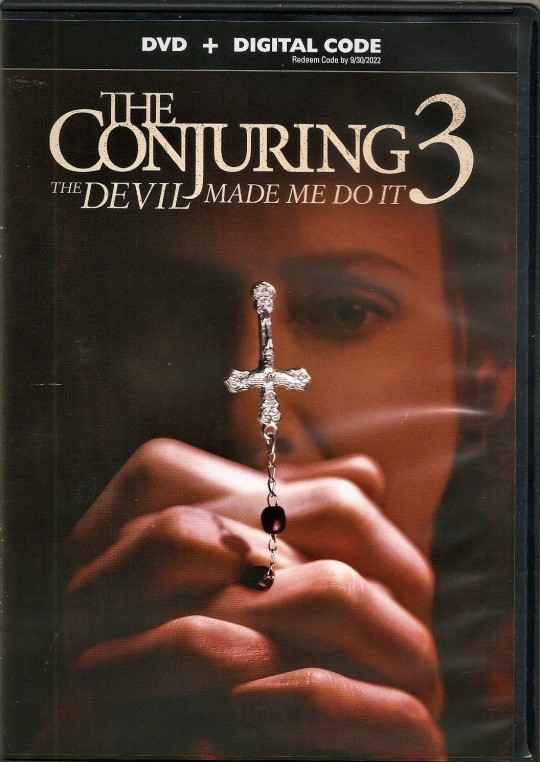
Bad movie I have The Conjuring :The Devil made me do it 2021
#The Conjuring :The Devil made me do it#New Line Cinema#Patrick Wilson#Vera Farmiga#Ruairi O'Connor#Sarah Catherine Hook#Julian Hilliard#John Noble#Eugenie Bondurant#Shannon Kook#Ronnie Gene Blevins#Keith Arthur Bolden#Steve Coulter#Vince Pisani#Ingrid Bisu#Andrea Andrade#Ashley LeConte Campbell#Sterling Jerins#Paul Wilson#Charlene Amoia#Davis Osborne#Nicholas Massouh#Stella Doyle#Megan Ashley Brown#Mitchell Hoog#Jimmy Gonzales#Franco Castan#Mark Rowe#Chris Greene#Lindsay Ayliffe
5 notes
·
View notes
Text
Horror Movie Review: The Conjuring: The Devil Made Me Do It (2021)
Horror Movie Review: The Conjuring: The Devil Made Me Do It (2021)
“I am not going before a grand jury and saying he was possessed by demons.”
The Conjuring: The Devil Made Me Do It (also known as The Conjuring 3) is a 2021 American supernatural horror film directed by Michael Chaves, with a screenplay by David Leslie Johnson-McGoldrick from a story by Johnson-McGoldrick and James Wan. The film serves as a sequel to The Conjuring (2013) and The Conjuring 2…
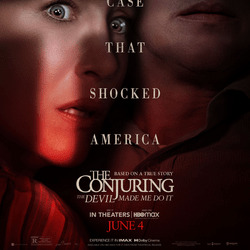
View On WordPress
#Andrea Andrade#Arne Cheyenne Johnson#Ashley LeConte Campbell#Bruno Sauls#Carl Glatzel#Charlene Amoia#David Glatzel#David Leslie Johnson-McGoldrick#Davis Osborne#Debbie Glatzel#Drew Thomas#Ed Warren#Eugenie Bondurant#Father Kastner#Father Newman#Ingrid Bisu#James Wan#Jessica Louise Strong#John Noble#Johnson-McGoldrick#Judy Glatzel#Judy Warren#Julian Hilliard#Jury Foreman#Kaleka#Katie Lincoln#Keith Arthur Bolden#Lorraine Warren#Mark Rowe#Megan Ashley Brown
2 notes
·
View notes
Text
Tesla, Vince Neil of Motley Crüe, Night Ranger, Winger, Kix, Slaughter, Firehouse, and More Booked for Monsters on the Mountain
Tesla, Vince Neil of Motley Crüe, Night Ranger, Winger, Kix, Slaughter, Firehouse, and More Booked for Monsters on the Mountain
Get ready to rock! Brought to you by the minds behind the Monsters of Rock Cruise, Monsters on the Mountain brings together the best names in classic 1980s hard rock and hair metal! Taking place this October 15th-17th at the LeConte Center at Pigeon Forge (2986 Teaster Lane, Pigeon Forge, TN 37863) in Tennessee’s Great Smoky Mountains, a huge lineup of bands from Tesla, Vince Neil of Motley…

View On WordPress
#and Jeff Scott Soto#Anthony Corder#BulletBoys#Don Jamieson#Eclipse#Eddie Trunk#Firehouse#Gilby Clark#Glam Metal#hair bands#hair metal#Jason Bieler#Jim Florentine#John Corabi#Kingdom Come#KIX#LeConte Center at Pigeon Forge#Liliac#Lynch Mob#Mark Evans#metal festivals#Monsters on the Mountain#Native Sons#Night Ranger#Pat Travers#Randy Hansen#Rhino Bucket#Slaughter#Tesla#That Metal Show
2 notes
·
View notes
Text
The evangelicals in 19th Century Williamsburg and Greenpoint. A Journey Retro
The evangelicals in 19th Century Williamsburg and Greenpoint. A Journey Retro
Williamsburgh, 1834. Illustration from Eugene L. Armbruster’s Photographs & Scrapbooks. Source: Brooklyn Historical Society.
The faith-flavored identity of New York City was decided on the frontiers of social controversy in religious places like the evangelical Protestant churches of Williamsburg and Greenpoint.
Early settlers in the area held private Sunday services in their homes or took a…
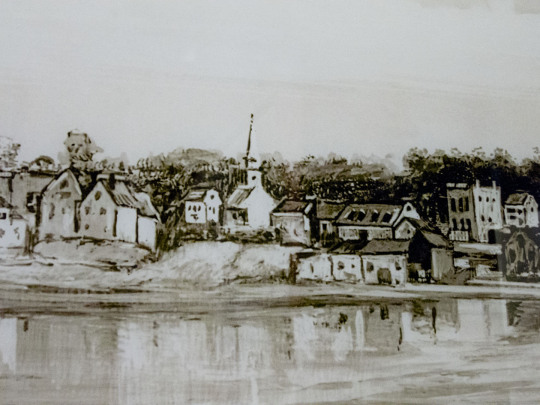
View On WordPress
#Brooklyn Abolitionists#Bushwick Dutch Reformed Church#Eighteenth Street Methodist Church#Eugene L Armbruster#First Baptist Church of Williamsburg#Greenpoint#Henry Reed Stiles#Jacob Riis#John LeConte#Joseph LeConte#Lenape Indians#Lydia Cox#North Third Street Mission#Panic of 1837#Phoebe Palmer#Samuel Cornish#Samuel Eli Cornish#Seventh Day Adventists#St John&039;s Methodist Episcopal Church#Sylvester Tuttle#Tony Carnes#William Hodges#Williamsburg#Williamsburg Bethel Independent Church#Williamsburg Bible Society#Williamsburg Methodist Episcopal Church#Williamsburg Temperance Society
0 notes
Photo

John Muir Trail, LeConte Canyon, California
#hiking#trail#hiking trail#footpath#john muir trail#pct#pct california#pacific crest trail#leconte canyon#california#ca#long trails#california trails#ca trails#california hiking#ca hiking#outdoors#backpacking#pct in ca
40 notes
·
View notes
Photo

Detail of Jaws. Little Pete Meadow, Leconte Canyon, John Muir Trail, Sequoia-Kings Canyon National Parks, Sierra Nevada Mountains, California, USA. Photo by Van Miller
#jaws#little pete meadow#john muir trail#sequoia-kings canyon national park#Sierra Nevada Mountains#jmt#Pacific Crest Trail#pct#leconte canyon#california#©Van Miller#backpacking#hiking#camping#outdoors#travel#photography#Hiking Trails#rocks#geology#igneous rock#granite#sculpture#Wilderness#the wilderness journals
9 notes
·
View notes
Text
damn if i was still in the valley i would love to start a daily protest outside the yosemite conservancy building to get all of those racists names out of yosemite
#like yeah john muir was problematic#but he didnt go about flaunty his racism like leconte#or help the nazis like david starr jordan#lets start off with those names shall we#help yosemite reclaim its native history again#t
0 notes
Note
If blood royal become movie is based of murder of Louis of Orleans and what your fancast of historical figures?
I think François Arnaud, Louis Garrel, and Raphaël Personnaz would all make good choices for Louis of Orléans. While no contemporary portraits of Louis exist (because portraiture of secular persons was not a thing in the 14th or early 15th centuries), he and his brother, Charles, were described as handsome, dark-haired, and charming.
For the rest of the historical figures, perhaps...
Guillaume de Tignonville: Guillaume Canet
Charles VI of France: Emmanuel Leconte (I loved Lambert Wilson’s portrayal of him in “The Hollow Crown”, but he’s a bit too old to portray Charles in 1407).
Isabeau of Bavaria: Laura Berlin or Charlize Theron (the latter was my original choice of fancast)
Valentina Visconti: Cristiana Capotondi or Vittoria Puccini
Jean the Fearless: Guillaume Gallienne (he's a little older than Jean was, historically, but has the right nose and can look brooding and menacing)
Margarete of Bavaria: Alexandra Maria Lara
Jean, duc de Berry: Ian McNeice or Richard Ridings
Louis II, duc de Bourbon: Lluís Homar or John Doman
Jeanne II, comtesse d'Auvergne: Christa Théret
7 notes
·
View notes